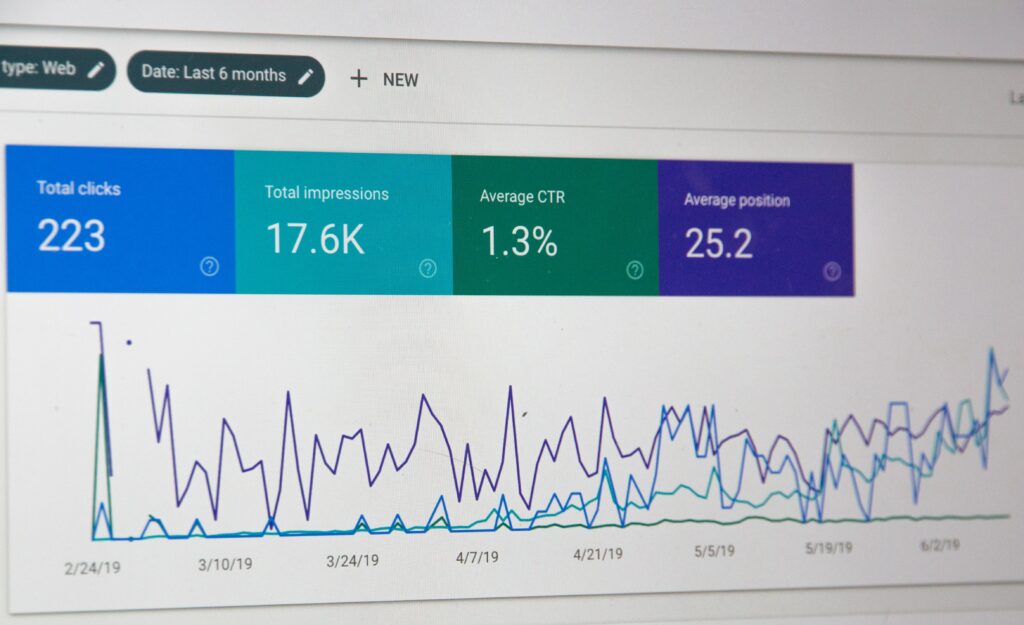Mastering the art of SERP analysis has become a cornerstone for businesses and individuals striving to establish a robust online presence. In this comprehensive guide, we unravel the intricacies of SERP analysis, providing actionable strategies to decode search engine results effectively.
By analyzing SERPs, marketers, and SEO professionals can gain invaluable information about the performance of their pages and those of their competitors.
From deciphering ranking factors to understanding user intent, embark on a journey that empowers you to interpret SERPs and leverage this knowledge to refine your digital strategy and outshine the competition.
Why Is SERP Analysis Important?
SERP analysis is a crucial component of SEO as it helps to reveal the difficulty of ranking for a particular keyword. Understanding whether rich results dominate the SERP can indicate the effort needed to achieve similar visibility.
They are analyzing the keyword “how” queries can uncover the types of content that satisfy user intent and guide content creation to address those needs.
By leveraging SERP analysis, businesses can identify gaps in their content strategy, adjust their approach to align with successful trends, and improve their SERP positioning.
The rich results also indicate the potential for enhanced click-through rates, making it vital to understand their impact on user behavior and search performance.
Determine Ranking Difficulty
One of the primary objectives of SERP analysis is to determine a keyword’s ranking difficulty. SEO tools are instrumental in this process, providing data on the level of competition, the number of external backlinks, and domain authority.
These factors contribute significantly to the complexity of achieving a high ranking for a given search term.
Assessing the quantity and quality of external backlinks pointing to the top-ranking pages offers a glimpse into the investment required to compete. SEO tools can help benchmark one’s backlink profile against those of the leading pages, thus informing the link-building strategy necessary to improve SERP positions.
Check Keyword Relevancy
Evaluating keyword relevancy is essential in SERP analysis to ensure content aligns with users’ needs. This step involves examining the current top-ranking pages and determining whether the content satisfies the search query’s intent.
If a keyword or phrase is highly relevant to the audience, it will likely drive more engagement and conversions. Moreover, keyword relevancy helps refine content targeting to meet user needs effectively.
It enables the creation of more focused and compelling content that resonates with the audience and meets their search criteria, enhancing the likelihood of a higher SERP ranking.
Find Ranking Opportunities
Finding ranking opportunities is about uncovering less competitive keywords that still hold significant potential for traffic generation. It involves analyzing the SERP for gaps or weaknesses in existing content that one can capitalize on.
By identifying these ranking keywords, businesses can create content that better addresses user queries and stands out. Ranking opportunities are often found in niche segments or by offering unique perspectives on familiar topics.
The goal is to find areas where the content can provide added value, improve user experience, and, as a result, improve the likelihood of ranking higher than the existing competition.

How to Do SERP Analysis?
SERP analysis begins by thoroughly examining the search engine results for a specific query. It considers the types of content ranked, the presence of rich results, and the overall user experience of the SERP.
This helps understand what search engines deem most relevant and valuable for users. The presence of rich results on the SERP, such as featured snippets or local packs, can influence how content creation and optimization are approached.
By studying these elements, one can tailor their SEO strategy to increase the likelihood of their content being featured prominently in the search results.
1. Perform Keyword Search
The first step in SERP analysis is conducting a keyword search. This involves identifying relevant and long-tail keywords that users are likely to search for.
Relevant keywords are those that closely align with a website’s content and services, while long-tail keywords are more specific phrases that typically have lower competition but can drive highly targeted traffic.
By focusing on these keywords, businesses can optimize their content to meet their audience’s specific needs and search behaviors.
The use of relevant and long-tail keywords can help attract more qualified leads and improve the site’s overall search engine ranking.
2. Identify the Search Intent
Identifying search intent is critical to driving more traffic to a website. It involves understanding the underlying purpose behind a search query, such as whether it has commercial intent, informational needs, or transactional goals. By aligning content with the identified intent, one can optimize their content to meet user expectations more effectively.
For example, a query “how” often signals a need for instructional or explanatory content, which can be addressed with how-to guides or tutorials. Results on this SERP often feature “people also ask” boxes, providing additional insight into related questions and user interests.
By tailoring content to these areas, websites can enhance their relevance and appeal to searchers, potentially leading to higher rankings and increased traffic.
3. Evaluate the Competitors
Competitive analysis is a cornerstone of an effective SEO strategy. Evaluating websites’ rankings for a particular keyword offers insights into what it takes to rank for it.
By analyzing the SERP, one can assess competitors’ strengths and weaknesses, including their use of external backlinks and other SEO metrics. This analysis provides a blueprint for what strategies are currently successful and how one might adjust one’s own SEO approach to compete more effectively.
It is important to consider the factors contributing to SERP rankings, from content quality to backlink profiles, to develop a comprehensive SEO strategy that can achieve better results.
4. Check the SERP Features
When analyzing the SERP, paying attention to the various SERP features that can impact visibility is crucial. Some of the key features to look for include:
- Featured snippets
- Knowledge panels
- Maps
- Image packs
- Video carousels
Understanding the relationship between these features, organic search results, and paid ads can reveal hidden opportunities.
Pro tip: Look for rich results, as securing a spot in these can significantly boost visibility. By tailoring content to take advantage of these features, one can differentiate their listings and potentially achieve higher click-through rates.
5. Check if the Query Is Location Specific
Some queries are inherently location-specific, which means the SERP will be tailored to provide results relevant to a searcher’s geographical area. For local businesses or services to recognize and optimize these location-based queries to be visible to the local audience.
Ensuring that a business’s name, address, and phone number (NAP) are consistent across listings and that local keywords are incorporated into the content can help improve local search visibility. Additionally, maintaining an active presence on local directories and review sites can enhance local SEO efforts and help businesses rank well for location-specific queries.
6. Optimize the Contents of a Page
Optimizing your content for search engines is a crucial step in SERP analysis. It enhances various elements like titles, meta descriptions, and keyword density to meet search engine standards.
A thorough competitor analysis can provide insights into what optimizations work for others in your industry, allowing you to implement similar strategies. By analyzing the top pages in the SERPs, you can identify the content quality and structure that search engines favor.
This analysis enables you to refine your content, ensuring it is comprehensive, user-friendly, and aligned with the search intent, thereby improving your chances of climbing the SERP rankings.
7. Create Better Content
Generating content ideas that resonate with your audience is vital in outranking the competition. By studying shopping results and the backlink profiles of top-ranking pages, you can uncover what draws users in and encourages them to engage with the content.
This knowledge helps craft superior content that appeals not only to users but also to search engines. Creating better content is not just about the text on the page; it’s about the overall user experience.
Use your SERP analysis to find market gaps and understand the chances to rank higher. Then, create content that addresses those needs, providing clear, accurate, and engaging information that stands out in a crowded digital space.

How Are SERP Rankings Calculated?
Search Engine Results Pages (SERPs) are determined by a complex set of factors that search engines use to rank content. Some of the key factors include:
- Time spent on page – indicating user engagement and content relevance
- Number of backlinks – suggesting the content’s authority and trustworthiness
- Website authority – based on overall site quality and credibility
- Bounce rate – reflecting whether users find the content useful
- Click-Through Rate (CTR) – demonstrating the appeal of your listing in search results
- Page speed – affecting user experience and satisfaction
- Conversion rate – showing the effectiveness of the content in achieving its goals
Together, these metrics contribute to a page’s ability to secure rich results, which are enhanced snippets that provide users with more information directly in the SERPs, potentially increasing visibility and CTR.
Tools to Do SERP Analysis
A variety of tools are available to conduct a SERP analysis effectively. These tools can help identify top-ranking pages, uncover opportunities to rank, and understand transactional intent alongside other search intents.
They can also aid in crafting a content strategy by using structured data to gain insights into what content to create. These tools analyze the Google SERP to provide valuable information on keyword rankings, rich snippets, click-through rates, and shopping results.
By utilizing these insights, you can identify content gaps, enhance your backlink profile, and refine your content marketing and digital marketing efforts through generative AI to rank for a keyword.
1. Semrush Position Tracking Tool
The SEMrush position tracking tool is instrumental in competitor analysis. It allows you to track your ranking positions for keywords compared to your competitors.
Providing a detailed view of the SERP landscape helps identify the strengths and weaknesses of your own and your competitors’ SEO strategies.
With this tool, you can monitor fluctuations in keyword positions and gain insights into the optimization efforts contributing to your competitors’ success. You can then leverage this information to improve your rankings and strategize more effectively.
2. Moz Pro SERP Analysis Tool
Moz Pro offers a suite of SEO tools, including features for SERP analysis, which are vital for understanding organic traffic trends. SERP analysis involves examining the engine results pages to determine the factors contributing to a webpage’s ranking.
With Moz Pro, you can engage in engine results page analysis, which includes tracking SERP volatility and getting an overview of the SERP landscape. This tool also helps conduct a SERP analysis by providing data on estimated monthly searches, internal links, referring domains, and SEO best practices.
3. WhatsMySERP Checker
WhatsMySERP is a dedicated tool for analyzing a SERP for specific target keywords. It offers insights into how Google’s algorithm interprets and ranks pages based on those keywords. This tool can be particularly useful in strategizing how to outrank your competitors.
By providing detailed information about the results and SERP features for chosen keywords, WhatsMySERP empowers you to refine your SEO approach, considering the competitive landscape and the latest search trends.
4. Ahrefs Keyword Explorer
Ahrefs Keyword Explorer is a comprehensive keyword explorer tool that helps you find keywords relevant to your content and understand their ranking potential. The tool provides detailed keyword data, including search volume, keyword difficulty, and SERP overview.
With Ahrefs, you can also gain insights into the search intent behind keywords, allowing you to create content that aligns with user expectations and enhances your SEO efforts. This tool is invaluable for deepening their keyword research and improving their overall SEO strategy.
5. SERPWoo
SERPWoo is a tool that specializes in providing an in-depth SERP analysis. It monitors the SERP for changes and tracks the performance of your own and your competitors’ domains over time.
Its focus is on offering a comprehensive view of the search landscape, which can be critical for making informed decisions in your SEO strategy.
6. SE Ranking
SE Ranking is a versatile SEO platform that offers a wide range of features, including robust tools for SERP analysis. Its capabilities help you track your website’s performance and identify trends within the SERPs.
The tool’s analysis provides insights into keyword distribution, rankings, and the effectiveness of your SEO efforts, making it a valuable asset for businesses looking to improve their online presence and search visibility.

Wrap-Up
In conclusion, SERP analysis is pivotal for anyone aiming to rank on this SERP. It provides insight into the competitive landscape, reveals keyword relevancy, and highlights potential areas for content optimization.
By understanding the intricacies of search engine results pages, one can tailor strategies to improve visibility and achieve better rankings. Moreover, incorporating visual content can significantly enhance a page’s appeal as SERPs increasingly prioritize multimedia elements.
By concluding a thorough SERP analysis and applying these insights, webmasters and SEO professionals can craft content strategies that resonate with search engines and users.


